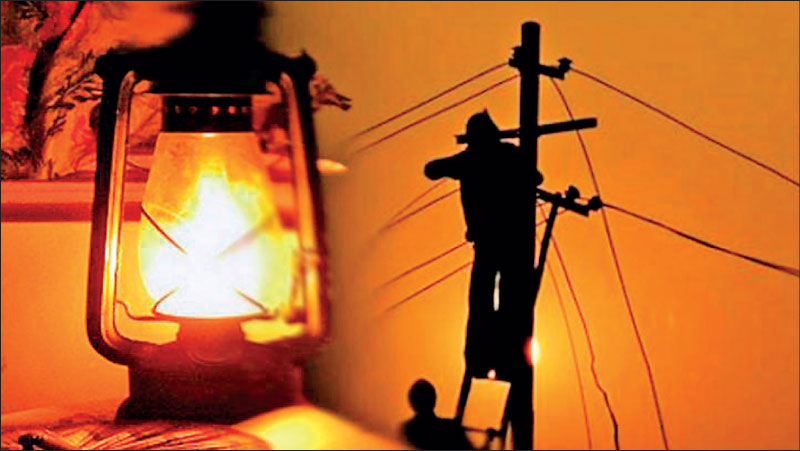Saturday Apr 19, 2025
Saturday Apr 19, 2025
Thursday, 21 April 2022 02:25 - - {{hitsCtrl.values.hits}}

In these days of limited attention (and paper supplies), it would be useful if greater weight is given to the appropriateness of the proposed solutions for the time needed to solve the problems that beset us
 A few days after the tsunami, I was called to an expert meeting at Temple Trees by the then Prime Minister, Mahinda Rajapaksa. I was seated next to Arisen Ahubudu, the famous giver of names. He stated that we had lost too much territory, including Madagascar, and that we could not afford to lose more. He proposed building a wall around the country, using the traditional techniques used in protecting tank bunds, the ralepanawa. I was stunned that such a nice and well-meaning person could come out with such arrant nonsense. He had confused geological time with human time.
A few days after the tsunami, I was called to an expert meeting at Temple Trees by the then Prime Minister, Mahinda Rajapaksa. I was seated next to Arisen Ahubudu, the famous giver of names. He stated that we had lost too much territory, including Madagascar, and that we could not afford to lose more. He proposed building a wall around the country, using the traditional techniques used in protecting tank bunds, the ralepanawa. I was stunned that such a nice and well-meaning person could come out with such arrant nonsense. He had confused geological time with human time.
Timescale confusions of a smaller magnitude are evident among many proposing solutions to our current multi-faceted crisis.
Solutions to power cuts
We all experience the problem. Some of us understand the cause: no dollars to pay for fuel for the generators that make up for the shortfall from lower production from the hydro generators and Norochcholai. Even if we had the dollars, such fuel is priced in dollars and subject to price fluctuations that we cannot control. It is common sense that we should shift to electricity produced by renewable sources such as solar and wind.
The problem is that under current market and technology conditions, both the distribution network (low voltage) and the transmission network (high voltage) are limited in how much solar- and wind-generated electricity they can accept. We can, and should, increase the use of electricity from renewable sources, but we need to upgrade the transmission network to be able to do so. Solar panels yield electricity when the sun is out (not at night and not when clouds pass over the panels); wind will produce electricity even in evenings when our use is highest, but it is still intermittent. Batteries are not cost-effective yet.
Given the need to balance supply and demand of electricity in real time caused by lack of cost-effective storage technologies, we need a large and modernised system in order to absorb more energy from these intermittent sources. We need to invest in upgrading the national grid and possibly connect to the large Indian grid. Feasibility studies must be done, and investment mobilised. It will take several years for the desired outcomes to be achieved. Increasing solar- and wind-based energy is not a viable solution for our immediate problems, though it is a solution in the long term. Within the applicable timescale, what we need are dollars for coal and diesel.
Promotion of manufacturing
Twin deficits, exacerbated by recent economic mismanagement, caused the crisis. More exports would have addressed the current-account deficit and may have helped with the fiscal deficit if the right tax policy was in place. Roughly $ 11 billion was earned from the export of goods such as apparel, tea, and value-added rubber products before the pandemic. Around $ 7 billion was claimed from service exports such as tourism, software and business process outsourcing.
It is true that the East Asian Tigers and China took their people out of poverty through the production of goods for export. One has to ask why Sri Lanka (and to a significant extent, the rest of South Asia) failed to ramp up the production of goods for export, relying more heavily on service exports. One could even argue that the apparel industry is a service industry. A tailor who makes a suit out of material given to him is undoubtably a provider of services. The Sri Lankan apparel industry, which is the largest importer as well as the largest exporter, is doing what a tailor does, at scale. If it is manufacturing, it is manufacturing lite.
Until the market opening in 1978, the answer to the question of why we had no industries was that our private sector was weak and lacked capital. Therefore, the State went into manufacturing: steel, plywood, tyres, sugar, paper, shoes, cooking implements, etc. were all produced by fully State-owned enterprises under protection. They produced shoddy goods at high prices for the local market and lost enormous amounts of money. The plywood factory resulted in the clear-cutting of half of Sinharaja. After the market was opened to imports, they went out of business.
Since 1978, we have relied on private investors, with or without foreign partners, to manufacture for export (and for domestic use). They have tended to invest in sectors that did not rely too heavily on cheap energy (because our electricity prices were high, especially for industrial users). Except in the case of a few sectors such as apparel and rubber-based products, our producers failed to secure access to markets. Restrictive laws and para tariffs hindered local producers from getting integrated into global production networks, with very few exceptions.
So, the industrialisation prescription as a solution to the crisis will take time and effort to implement. We would have to ensure reliable and low-cost energy (and other infrastructure services such as waste disposal), eliminate para-tariffs, and create the conditions for market access. The latter is the most challenging.
Investors such as Michelin ensured market access for the solid tyres produced in Sri Lanka. The apparel industry also benefited in the early stages from foreign investors who facilitated market access. Attracting such investors and entering into trade agreements are needed for market access. But both take time.
Industrialisation may be a good solution, but it is not for the Government to decide on manufacturing priorities. Because China has established itself as the factory to the world, countries such as ours must identify and exploit niches. Those best positioned for this are those with intimate knowledge of the markets, with skin in the game, namely private investors. The State must create the conditions and leave the actual investment decisions to such players. All this will occur on a timescale different from what is relevant to emerging from the present crisis.
Constitutional reforms
It has become evident that the hyper-presidential system created by the 1978 Constitution has failed to yield the promised benefits and has caused serious damage after the enactment of the 20th Amendment, which removed all the checks that were placed on the President by the 19th Amendment. For example, the Minister of Finance has stated that specific officials were responsible for the tax cuts that triggered the present crisis and the delay in debt restructuring. In the current system, the sole authority for those appointments was the President who must therefore be held accountable for the current crisis.
To address the demands of the protestors, the President must go. He must resign or be impeached. The former can take place immediately would allow the country to return to normal (if such a condition exists after the devastation wreaked by the President and his appointees). The time taken to impeach will be too long.
The next best solution is to reduce the powers of the President. This would require a Constitutional amendment. An amendment that is approved by Cabinet can be completed within around six weeks. If it is moved as a private member’s motion, it could take more than six months, outside the timeframe needed to calm the country and get the debt restructuring done. The announcement that the Government is proposing the restoration of the 19th Amendment suggests a solution within the required timescale. Of course, it would be necessary to scrutinise the proposed amendment and ensure the President’s powers are meaningfully reduced immediately.
In innumerable discussions I have participated in, I hear proposals for Constitutional reform that pay no heed to the time factor. Some talk of a Constitution authored by the people, modelled on what is going on in Chile. The process began with an amendment to the Constitution and a referendum in 2020. This was followed by an election for a Constituent Assembly in April 2021. Its deliberations are ongoing. How realistic is this kind of process for the kinds of issues that have brought our people to the streets?
In these days of limited attention (and paper supplies), it would be useful if greater weight is given to the appropriateness of the proposed solutions for the time needed to solve the problems that beset us.
Discover Kapruka, the leading online shopping platform in Sri Lanka, where you can conveniently send Gifts and Flowers to your loved ones for any event including Valentine ’s Day. Explore a wide range of popular Shopping Categories on Kapruka, including Toys, Groceries, Electronics, Birthday Cakes, Fruits, Chocolates, Flower Bouquets, Clothing, Watches, Lingerie, Gift Sets and Jewellery. Also if you’re interested in selling with Kapruka, Partner Central by Kapruka is the best solution to start with. Moreover, through Kapruka Global Shop, you can also enjoy the convenience of purchasing products from renowned platforms like Amazon and eBay and have them delivered to Sri Lanka.
Discover Kapruka, the leading online shopping platform in Sri Lanka, where you can conveniently send Gifts and Flowers to your loved ones for any event including Valentine ’s Day. Explore a wide range of popular Shopping Categories on Kapruka, including Toys, Groceries, Electronics, Birthday Cakes, Fruits, Chocolates, Flower Bouquets, Clothing, Watches, Lingerie, Gift Sets and Jewellery. Also if you’re interested in selling with Kapruka, Partner Central by Kapruka is the best solution to start with. Moreover, through Kapruka Global Shop, you can also enjoy the convenience of purchasing products from renowned platforms like Amazon and eBay and have them delivered to Sri Lanka.